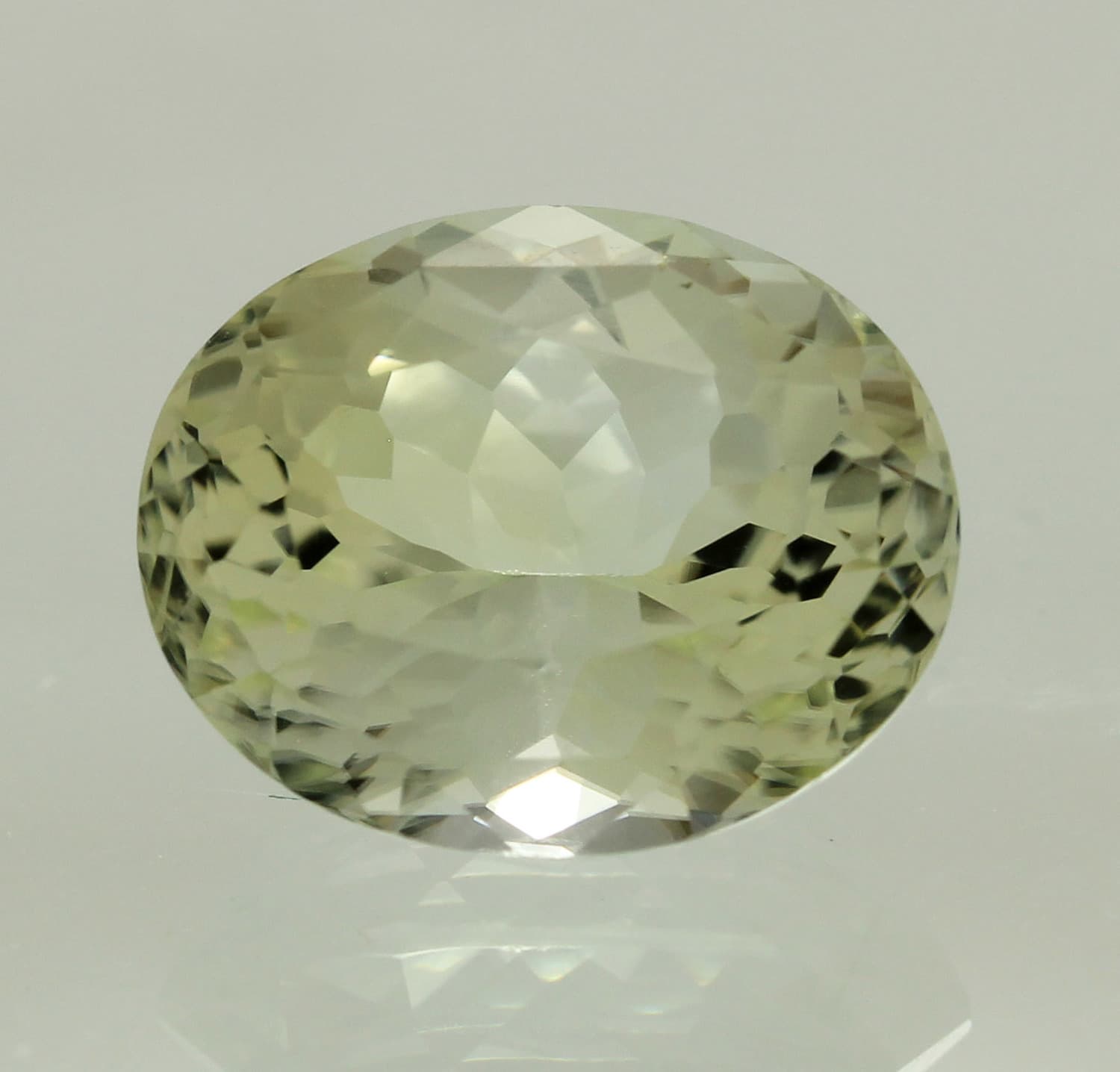Datolite Value, Price, and Jewelry Information
Datolite is a popular collector’s mineral. Polished sliced nodules can show off very attractive colors. Too soft for regular jewelry use, faceted and cabbed datolites are rare.
1 Minute Read
Datolite is a popular collector’s mineral. Polished sliced nodules can show off very attractive colors. Too soft for regular jewelry use, faceted and cabbed datolites are rare.
Start an IGS Membership today
for full access to our price guide (updated monthly).Datolite Value
Comments
Most faceted datolite gems show pale yellowish or green colors. Some are colorless. While faceted gems have high brilliance, they have little fire or dispersion. Massive brown or white material may yield cabochons. Copper inclusions in material from Michigan can create striking colors.
Identifying Characteristics
Datolites may fluoresce blue under shortwave ultraviolet light.
Due to their high birefringence, faceted datolites may show doubling of facet images.
Synthetics
Datolite serves as a source of boron. Thus, scientists have used hydrothermally grown synthetic material for research into utilizing its luminescence to improve prospecting efficiency. However, there is no known use of synthetic datolites in jewelry.
Datolite nodules may resemble howlite. Nevertheless, their physical properties differ considerably, notably their hardness (5.5 versus 3.5 or less) and specific gravity.
Enhancements
No known gem treatments.
Sources
Primorsky Krai in the Russian Far East produces large, gem-quality datolite crystals.
Notable gem sources in the United States include:
- Massachusetts: Springfield and Lane's Quarry, Westfield.
- Michigan: Lake Superior Copper district (nodules of massive datolite).
- New Jersey: Paterson and other localities.
Other notable gem-quality sources include:
- Tyrol and Habach, Austria.
- Faraday Mine, Ontario, Canada (colorless material).
- Mexico; South Africa; Cornwall, United Kingdom.
Stone Sizes
Brown or white massive material will cut cabochons up to several ounces. However, gem collections seldom hold these cabochons, as it seems most collectors prefer sliced nodules. These can measure up to about 6 inches in diameter.
The best faceting material comes from Massachusetts, with fine pale green material from New Jersey. The largest gems cut from these materials range up to 5 carats.
Larger stones are very rare.
- Smithsonian Institution (Washington, DC): 5.4 and 5.0 (colorless, Massachusetts).
- Harvard University: 13.21 (flawless triangle, Massachusetts).
- National Museums of Canada (Ottawa, Ontario): 0.45 (colorless, Canada).
Care
You're more likely to find datolites in mineral collections than jewelry collections. However, if worn occasionally or in protective settings, these gems can make interesting conversation pieces. They can match popular opals in hardness but without the additional wear and care restrictions. However, datolites do need to be stored separately from other harder, well-known jewelry stones to avoid contact scratches. Clean datolites with a soft brush, mild detergent, and warm water. See our Gemstone Jewelry Cleaning Guide for more recommendations.
Joel E. Arem, Ph.D., FGA
Dr. Joel E. Arem has more than 60 years of experience in the world of gems and minerals. After obtaining his Ph.D. in Mineralogy from Harvard University, he has published numerous books that are still among the most widely used references and guidebooks on crystals, gems and minerals in the world.
Co-founder and President of numerous organizations, Dr. Arem has enjoyed a lifelong career in mineralogy and gemology. He has been a Smithsonian scientist and Curator, a consultant to many well-known companies and institutions, and a prolific author and speaker. Although his main activities have been as a gem cutter and dealer, his focus has always been education.
International Gem Society
Related Articles
Friedelite Value, Price, and Jewelry Information
Zektzerite Value, Price, and Jewelry Information
Kyanite Value, Price, and Jewelry Information
Nepheline Value, Price, and Jewelry Information
Never Stop Learning
When you join the IGS community, you get trusted diamond & gemstone information when you need it.
Get Gemology Insights
Get started with the International Gem Society’s free guide to gemstone identification. Join our weekly newsletter & get a free copy of the Gem ID Checklist!
